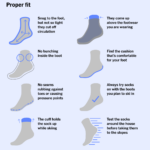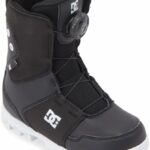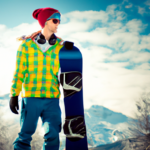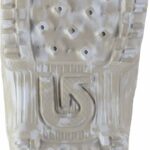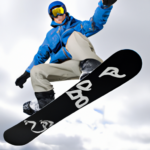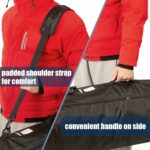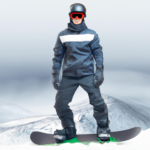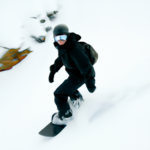As you gear up for a thrilling snowmobiling adventure, navigating the snow-laden landscapes, it becomes crucial to layer up with the right attire. This little guide, “What To Wear For Snowmobiling?” is your go-to reference for your preparation. It wraps up all the essential clothing pieces you need to stand up to the cold and still enjoy the adrenaline-pumping experience of snowmobiling. From selecting the warmest gloves and socks, to choosing the right helmets, goggles, and boots, this detailed guide is designed specifically to aid you in making the best choices for your snowy escapades.
Understanding the Importance of Proper Clothing
When it comes to snowmobiling, choosing the right outfit matters a lot. Your attire can significantly influence your performance and overall experience on the snowy trails.
The Influence of Weather Conditions
Weather conditions are a crucial factor in deciding your attire for snowmobiling. Different climates require different types of gear. For instance, the kind of clothes you wear in mild weather will be different from what you wear in extreme cold or rainy conditions. It’s important to check the forecast before your trip and dress accordingly to ensure your safety and comfort.
Safety Concerns and Correct Attire
Aside from keeping you warm and snug, snowmobiling attire also plays a critical role in your safety while on the trails. Your clothing should provide a good measure of protection from potential accidents or injuries. Wearing the proper gear can lessen the impact of falls and prevent more severe damage. From helmets to snowmobile boots, every component of your outfit serves a protection purpose.
Comfort versus Functionality
While functionality, safety, and weather suitability are important, you also want to make sure that you’re comfortable in your attire. After all, snowmobiling isn’t just about reaching your destination; it’s also about enjoying the ride! Pick an outfit that provides a balance between comfort and functionality. Comfort doesn’t only mean putting on cosy clothes but also gear that allows you to move freely and doesn’t constrain your mobility.
Layering for Snowmobiling
Stacking layers is a common practice in most winter sports, including snowmobiling. It helps keep your body warm by trapping heat effectively.
The concept of Layering
The layering system generally consists of three layers: the base, mid, and outer layer. Each layer serves a specific purpose to shield your body from cold temperatures and maintain optimum body heat.
Base Layers
The base layer is the closest to your skin. It has two main jobs: to regulate temperature and wick away sweat. Go for materials like merino wool or synthetic fabrics, which have excellent moisture-wicking properties, keeping you dry and comfortable.
Mid Layer
The function of the mid-layer is to provide insulation. Depending on the temperature, you can adjust the thickness of this layer. Fleece or synthetic jackets are a good option for this layer. They provide warmth without adding too much weight.
Outer Layer
Lastly, the outer layer is there to protect you from the elements. This layer shields you against wind, rain, and snow. Pick a snowmobile suit or jacket that’s waterproof, windproof and yet breathable.
Balancing between Warmth and Breathability
While staying warm on your snowmobile journey is crucial, it is equally essential not to overheat. Overheating can lead to excessive sweating, which will dampen your clothing and eventually make you cold. Therefore, striking a balance between warmth and breathability is key.
Headgear for Snowmobiling
Nothing exposes you to the chill of winter like a bare head. Therefore, suiting up your head adequately is essential during snowmobiling.
Helmets
Helmets are a must for both safety and warmth. Choose a helmet that fits snugly and is both comfortable and lightweight. Opt for one with good ventilation, and if you can find one with a heated visor to prevent fogging, that’s even better.
Goggles
Goggles provide essential protection for the eyes against wind, snow, and the sun’s UV rays. Ensure that your goggles fit well with your helmet and have a good anti-fog quality.
Balaclavas and Neck Warmers
For extra warmth and protection, you can add a balaclava or a neck warmer to your outfit. They can shield your face, neck and mitigate heat loss.
Importance of Visibility and Fit
Remember, visibility is crucial for your safety. Choose headgear that doesn’t obstruct your sight. Moreover, a good fit is essential not just for comfort but also to ensure all equipment works effectively.
Jackets and Bibs
Specialised jackets and bibs are non-negotiable when it comes to snowmobiling.
Specialized Snowmobiling Jackets
A snowmobiling jacket is usually the outermost layer that protects you from snow, wind, and sometimes even hard falls. They are designed particularly for snowy trails, meaning they offer high levels of insulation, breathability, and weather resistance.
Key Features for Jackets
When shopping, look for a jacket with a snow skirt, storm flaps, and adjustable cuffs. These features can prevent snow from entering your jacket. Also, consider a jacket with plenty of pockets for storing your valuables and essentials.
Snowmobile Bibs
Snowmobile bibs, also known as snow pants, are just as important as a good jacket. They help to keep your lower body warm and dry.
Materials and Insulation
Quality bibs are made with a windproof and waterproof yet breathable material. Insulated bibs provide the best protection in extreme cold weather.
Gloves and Mittens
Keeping your hands warm while maintaining grip and control over your snowmobile is critically important.
Choosing between Gloves and Mittens
Whether to opt for gloves or mittens largely depends on personal preference. While mittens tend to be warmer, gloves offer better dexterity, which can be crucial for controlling your snowmobile.
Insulated versus Non-Insulated
Insulated gloves provide better warmth and are ideal for colder conditions. However, on warmer days or when performing strenuous activities, non-insulated gloves might be more suitable to prevent sweating.
Waterproofing
You’ll need your gloves or mittens to be waterproof to keep your hands dry. Wet hands can quickly lead to cold hands, even if the gloves are well-insulated.
Extra Features like Wrist Leashes or Touchscreen Compatibility
Features like wrist leashes ensure you won’t lose your gloves when you take them off, while touchscreen compatibility allows you to operate your smartphone without removing your gloves.
Boots and Socks
Cold feet can make for a miserable ride, so investing in a good pair of socks and boots is crucial.
Snowmobiling Boots
Snowmobiling boots should be sturdy, waterproof, well-insulated and comfortable. Look for features like ease of fastening and durability.
Socks Material and Thickness
As for socks, go for materials like merino wool that provide good insulation and moisture-wicking properties. Avoid thick socks as they can restrict circulation and end up making your feet cold.
Importance of Dryness
Keeping your feet dry is fundamental to keeping them warm. Therefore, opt for boots that are not just waterproof, but also breathable so that sweat can evaporate.
Boot Features like Ease of Fastening, Insulation, and Durability
Fastening systems that are easy to use even with gloved hands are a plus. Adequate insulation is a must, and durability ensures your boots will hold up for many seasons.
Choosing the Right Materials
The material of your clothing plays a crucial role in overall warmth and comfort.
Merino Wool
Merino wool is a popular choice for base layers and socks due to its superior insulation and moisture-wicking properties. It is soft, lightweight, and retains warmth even when wet.
Synthetics
Materials like polyester and nylon are excellent at moisture management, drying quickly and offering good insulation. They are used in all clothing layers from base to outer.
Down Insulation
Considered one of the warmest materials for insulation, down is typically used in jackets and mittens. However, it must be kept dry to maintain its insulation properties.
Avoiding Cotton
While cotton is comfortable, it absorbs moisture and dries slowly, which can lead to chilling. Avoid it, especially in base layers and socks.
Snowmobiling Packs and Safety Gear
Having essential safety gear with you can make difference between a minor hiccup and a disastrous situation.
Backpacks
A backpack allows you to conveniently carry your safety gear, snacks, and any other essentials like maps or a GPS device.
Avalanche Beacons, Probes, and Shovels
If you snowmobile in avalanche terrain, carrying an avalanche beacon, probe, and shovel is a must. These devices can make the difference between life and death if an avalanche occurs.
First Aid Supplies
A well-stocked first aid kit can be handy to deal with minor injuries that can occur during snowmobiling.
Adjusting Clothing for Long Rides
Regulating your gear for long rides is essential for continuous comfort.
Regulating Body Temperature
Adding and removing layers as needed can help regulate your body temperature. Also, consider unzipping or loosening your outer layer to enhance ventilation when you start feeling too warm.
Rain and Wind Protection
Long rides can expose you to varying weather conditions. Make sure your outer layer is waterproof and windproof to tackle any unexpected rain or wind.
The Role of Spare Clothes
Always carrying a set of dry spare clothes could be a lifesaver if you get wet. This is especially important for longer rides.
Maintenance and Care for Snowmobiling Gear
To ensure your snowmobiling gear lasts for seasons to come, proper maintenance and care are necessary.
Washing and Drying
Use gentle cycle settings and mild detergent to wash your gear. Also, never put your gear away damp. Always allow it to dry thoroughly before storing to prevent mold and mildew.
Storage
Store your gear in a clean, dry space. Avoid places with high heat or moisture. For jackets and bibs, hanging them rather than folding can help keep the insulation distributed evenly.
Repairing and Replacing
Regularly check your gear for any tear or wear. Repairing minor issues in a timely manner can prevent bigger problems later. However, despite your best care, all gear will eventually need to be replaced. If your gear is no longer keeping you warm and dry, it’s probably time for a replacement.
- What Snowboard Bindings Should I Get? - January 23, 2024
- What Size Screws For Snowboard Bindings? - January 23, 2024
- How To Snowmobile On Water? - January 23, 2024

